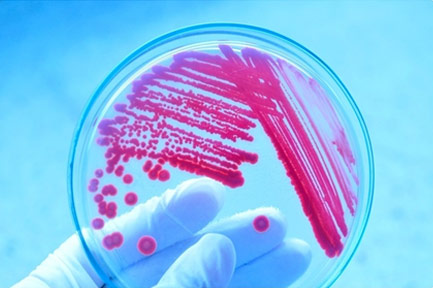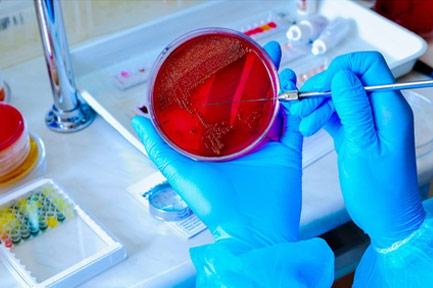Clinical Microbiology
Medical microbiology is a branch of medical science concerned with the prevention, diagnosis and treatment of infectious diseases. The site at which a microbe enters the body is referred to as the portal of entry. These include the respiratory tract, gastrointestinal tract, genitourinary tract, skin, and mucous membrane.
These diseases can include those caused by bacteria (e.g., Group A streptococcus that may cause strep throat); those caused by viruses (e.g., influenza A that cause the flu); those caused by fungi (e.g., Candida, which may cause vaginal yeast infections); or those caused by parasites (e.g., Giardia, which may cause diarrhea).
Specimens may be collected from a number of different sources, including blood, urine, and swab specimens of the throat.
Culture: Isolation of infectious agents frequently requires specialized media. Nonselective (noninhibitory) media permit the growth of many microorganisms. Selective media contain inhibitory substances that permit the isolation of specific types of microorganisms.
Some examples of microbiology tests are:
- Semen culture & sensitivity
- Semen analysis
- Sputum culture & sensitivity
- Stool culture & sensitivity
- Stool routine & examination
- Throat swab culture & sensitivity
- Urethral swab culture & sensitivity
- Urine culture & Sensitivity
- Urine routine examination
- Wound swab
- Fecal occult blood
- HVS culture & sensitivity
- Nasal swab


